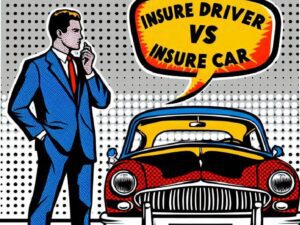FloodFlash launches series on Behavioural Science

Authored by FloodFlash marketer Kirsty Hume
Humans act irrationally. We have irrational fears. We buy things we don’t need, and keep things we don’t use. Irrational behaviour isn’t limited to small decisions. It can extend to significant decisions like insurance too. Biases and mental shortcuts influence our decisions every day. And that’s not (always) a bad thing.
Behavioural science is the discipline that aims to discover why people make these irrational decisions. In this blog series we will explore different behavioural science phenomena and the impact they have on flood insurance decision making. In this blog, we will look at why our brains aren’t always rational and introduce the core concepts behind behavioural science.
Decisions, decisions…
People make decisions all day. Many of those decisions are subconscious. This means we are not aware of them being made. Our conscious brain is subject to an estimated 11 million bits of information per second. Our conscious brain can only process about 40 of these per second. We can’t ignore all the remaining bits. We might miss something important. To deal with this shortfall in processing power, our brain uses mental shortcuts, known as heuristics.
Heuristics look for patterns so that our brain can make quick decisions based on the on the limited information it can process. If it wasn’t for these heuristics, we would spend hours making simple decisions. For example, when we buy cereal in the supermarket, we could spend hours considering the price, taste, branding, size, nutritional value, sustainability and other characteristics of each product.
Instead, our brains remember what we’ve liked before, or an advert we liked for a certain brand. It might even be that we like the colour yellow, and so we are subconsciously drawn to the cereal in a yellow box. While these shortcuts don’t always lead to economically optimal solutions, they are generally useful when it comes to making everyday decisions. However, they can result in irrational decisions.
The science of irrationality
What is behavioural science?
Behavioural science, also known as behavioural economics, is all about the way that emotions, the environment, and social factors influence our decisions. It is particularly interested in how heuristics, biases, and framing can lead us to making irrational choices.
Behavioural science seeks to explain why we make the choices we do. For example, it can help explain why we believe it is more likely for a coin to land on heads after landing on tails once, twice, or three times in a row. It can also explain why people move to hazard prone areas, or why people do not leave their area if there are warnings of a natural disaster.
While we need biases to make quick decisions, it is important to be aware of these so that we can minimise irrational choices or even change our minds about decisions.
One brain, two systems
A useful way of thinking of our brains is with two systems, an idea popularised by Nobel laureate Daniel Kahneman. System 1 is our fast, automatic, uncontrolled way of thinking – our unconscious mind. It looks for patterns, uses shortcuts, and is driven by emotions. System 2 is slower, more reflective and controlled – our conscious mind. We tend to avoid system 2 as much as possible as it takes both mental and physical effort. In fact, behavioural scientist Ewan McNay estimates that a person doing cognitively challenging work for 8 hours uses 100 more calories than a person watching TV for the same about of time.
It is easy to see how many people may default to system 1 thinking when it comes to flood insurance. After all, there are almost endless pieces of complex information to consider. Meanwhile, technical experts like insurers, brokers, and risk mappers are employed to use system 2 thinking. It is important to recognise this key distinction when speaking to individuals about their flood risk.
When did behavioural science begin?
In the 19th Century, the ‘economic man’ was the dominant model of human behaviour. The model suggested that individuals are rational beings, who act in their own economic self-interest. The theory dominated economic thought until the mid-20th Century. Many economists began arguing that humans often behaved irrationally and didn’t always behave in their own self-interest. This led to the start of behavioural science, which has since become the dominant way of thinking about human behaviour.
Why is behavioural science relevant to insurance?
Policymakers, managers, and companies all use behavioural science to understand how people act. The insurance industry is increasingly recognising the importance of behavioural science theories. A notable example of this is Dan Ariely, author of several behavioural science books, who was Chief Behavioural Officer for five years at the US insurance company Lemonade. Insurance is complex, and using the theories from behavioural science can help the industry simplify risks and communicate the importance of insurance to clients.
What will this series cover?
The blogs in this series will explore a set of System 1 biases and heuristics that are present in the insurance buying process, including:
Availability BiasHerd BehaviourOptimism BiasGambler’s Fallacy


